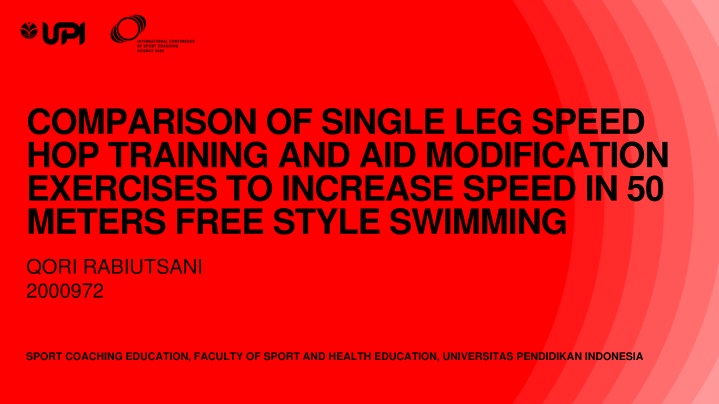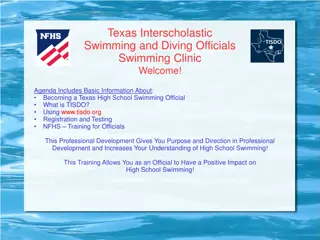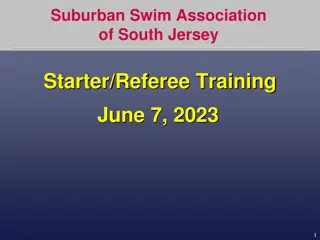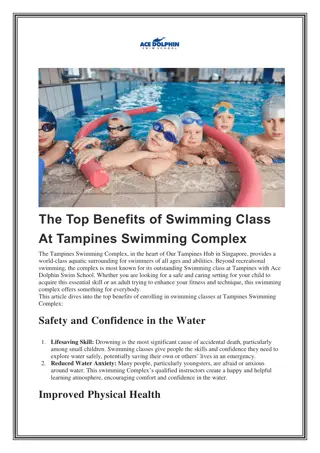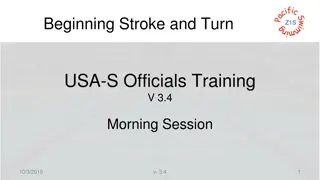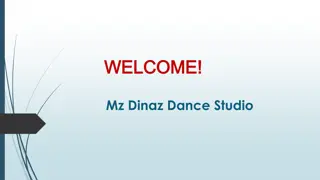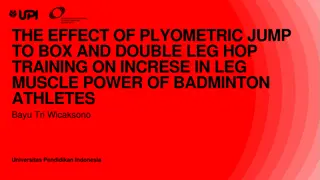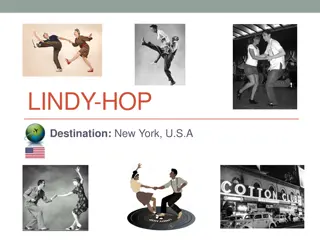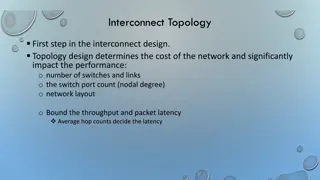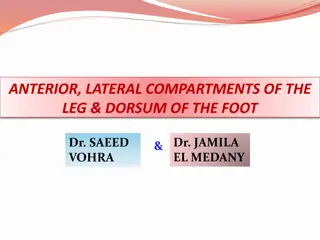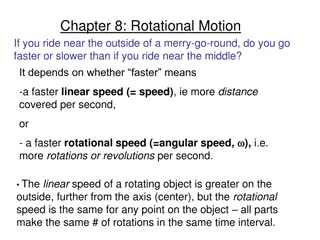Comparison of Single Leg Speed Hop Training and Aid Modification Exercises for Improving Speed in 50m Freestyle Swimming
This study examines the impact of single leg speed hop training and modified aid exercises on enhancing speed in 50m freestyle swimming. The research involves two groups undergoing specific training methods over 12 sessions within a week. Results discuss the descriptive statistics, normality test, homogeneity test, paired sample test, and independent sample test to evaluate the effectiveness of each training approach.
Download Presentation

Please find below an Image/Link to download the presentation.
The content on the website is provided AS IS for your information and personal use only. It may not be sold, licensed, or shared on other websites without obtaining consent from the author.If you encounter any issues during the download, it is possible that the publisher has removed the file from their server.
You are allowed to download the files provided on this website for personal or commercial use, subject to the condition that they are used lawfully. All files are the property of their respective owners.
The content on the website is provided AS IS for your information and personal use only. It may not be sold, licensed, or shared on other websites without obtaining consent from the author.
E N D
Presentation Transcript
COMPARISON OF SINGLE LEG SPEED HOP TRAINING AND AID MODIFICATION EXERCISES TO INCREASE SPEED IN 50 METERS FREE STYLE SWIMMING QORI RABIUTSANI 2000972 SPORT COACHING EDUCATION, FACULTY OF SPORT AND HEALTH EDUCATION, UNIVERSITAS PENDIDIKAN INDONESIA
INTRODUCTIONS The definition of swimming according to Arma Abdoelah (1981), states that swimming is a type of sport that is done in water, either in fresh water or in salt water or the sea. Swimming according to (Kasio Dwijowinioto, 1979:1) swimming is a sport that is suitable for everyone regardless of age, and full body swimming has many health benefits. Large groups such as abdominal muscles, arm muscles, hip muscles, and thigh muscles. Swimming is one of the aerobic sports that can improve lung function and is considered safe for the elderly, adolescents and early childhood because it is beneficial for the whole body. Swimming is a sport that competes in the speed of swimmers in swimming. The competed styles are freestyle, breaststroke, backstroke, and butterfly,according to Kurniawan (2011), In freestyle swimming, it is the fastest swimming style compared to other styles. This is caused by the leg movements and arm movements which are more effective in producing a push to move forward and to increase speed, leg muscle strength is needed.
Problem formulation 1. Is there a significant effect of single leg speed hop training on increasing speed in 50m freestyle swimming? 2. Is there a significant effect of modified aid training on increasing speed in 50m freestyle swimming? 3. Is there a comparison of single leg speed hop training with modified aid training on increasing speed in 50m freestyle swimming? Purpose of the study 1.To examine the significant effect of single leg speed hop training on increasing speed in 50m freestyle swimming. 2. To examine the significant effect of modified aid training on increasing speed in 50m freestyle swimming. 3. To examine the comparison of single leg speed hop training with modified aid training on increasing speed in 50m freestyle swimming.
METHODS Instrument 50 meter freestyle test Research Type Methods Experimental Research Design Two Groups Pretest-Posttest Design Research Procedure 12 meetings with methods from both exercises meetings in 1 week Population & Sample 1. Population : Marly Aquatic Analisis Data Deskriptif statistic Normality test Homogenity test Paired Sampel test Independent sample test Club 12 people KU 9-10 year. 2. Sample : Total Sampling
RESULT AND DISCUSSIONS 1. STATISTIC DESKRIPTIF 2. NORMALITY TEST
RESULT AND DISCUSSIONS 3. HOMOGENEITY TEST 4. PAIRED SAMPEL TEST 5. INDEPENDENT SAMPLE TEST
CONCLUSION 1. There is a significant effect of single leg speed hop training on increasing freestyle swimming speed. 2. There is a significant effect of Modification of aids training on increasing freestyle swimming speed. 3. There is no significant difference in the effect between training A and B on increasing freestyle swimming speed. 1.
